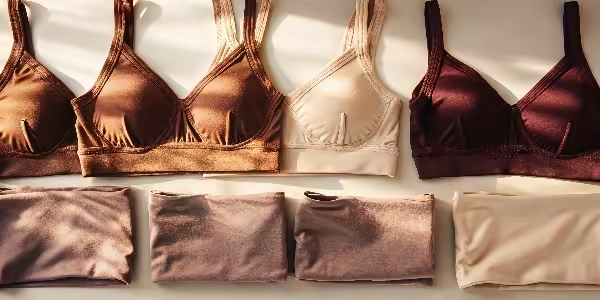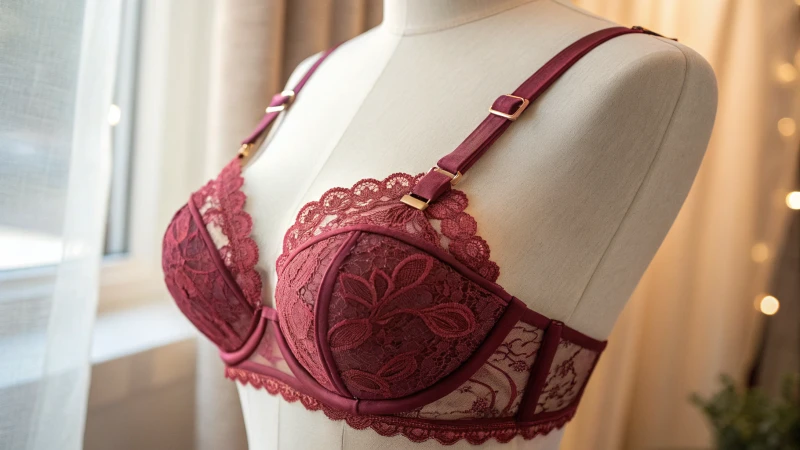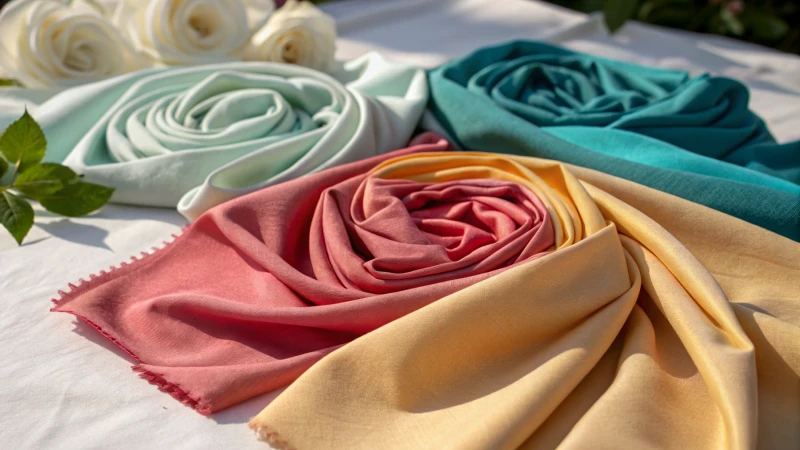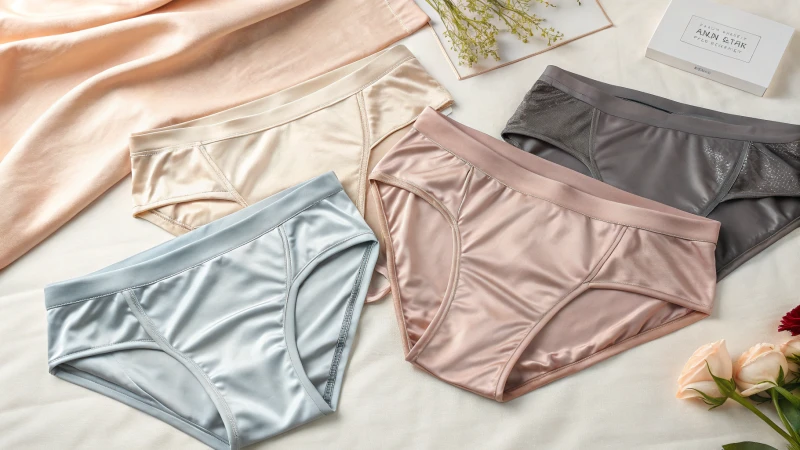
I’ve spent far too many days uncomfortable because of sweat, but finding the right underwear material was a game changer.
The best underwear materials for sweating are moisture-wicking fabrics like merino wool, polyester, nylon, and bamboo. These materials pull moisture away from your skin, keeping you dry and comfortable throughout the day.
I remember the first time I realized my old cotton underwear just wasn't cutting it. I was hiking on a hot summer day, drenched in sweat and feeling every bit of it. That's when I started my quest for the perfect fabric to keep me dry.
Moisture-wicking fabrics have been my savior. Merino wool is naturally breathable and keeps me cool in summer and warm in winter. Polyester and nylon are great for their lightweight feel and durability—ideal for those intense workout sessions. And bamboo? It's not just soft but also fights odor naturally, which is a huge plus.
Choosing the right material isn’t just about avoiding discomfort; it’s about enhancing your daily life. Whether I’m at the gym or just out running errands on a hot day, the right underwear makes all the difference.
Merino wool is the best material for sweaty conditions.True
Merino wool is highly effective at moisture-wicking, keeping skin dry.
Cotton is the top choice for sweat-wicking underwear.False
Cotton retains moisture, making it less ideal for sweating conditions.
How Does Merino Wool Keep You Cool and Dry?
You know that feeling when your clothes just work, regardless of the weather? That's Merino wool for you. It's like magic!
Merino wool keeps you cool and dry by absorbing moisture and allowing it to evaporate quickly. Its fibers breathe naturally, regulate temperature, and resist odors, making it perfect for all kinds of weather.

The Science of Merino Wool's Moisture-Wicking Ability
Let me tell you a little story. Picture this: I'm on a hiking trail, the sun is blazing, and I'm already dreading the inevitable sticky, sweaty feeling. But lo and behold, my Merino wool shirt is working wonders. It absorbs sweat like it's got a mission, holding up to 30% of its weight in moisture without feeling damp. It’s like having a personal air conditioner!
The secret? The fibers draw sweat away from my skin to the fabric's surface, where it evaporates quickly. I'm left feeling cool and comfortable, ready to conquer more miles.
Temperature Regulation through Breathability
Now, imagine the same hike, but in early spring when a chilly breeze can sneak up on you. Here’s where Merino wool shines again. Its breathability is like having a thermostat built into your clothing.
The fibers let air flow naturally, creating an insulating layer that traps warmth when I need it but also releases excess heat when the sun decides to come out in full force. This incredible self-regulation means I’m equally prepared for a surprise cool spell or a sudden warm day.
Odor Resistance for Lasting Freshness
And here’s a bonus: Merino wool fights off odors like a champ! After a long day outdoors, the last thing I want is to smell like I've been camping with skunks. Thanks to lanolin—a natural antibacterial agent in Merino—I can wear my clothes multiple times without any hint of that dreaded musty smell.
For outdoor adventures1 or extended travel, this is a lifesaver—less packing and more freshness!
| Property | Merino Wool | Synthetic Fibers |
|---|---|---|
| Moisture-wicking | Excellent | Very Good |
| Temperature regulation | Superior | Moderate |
| Odor resistance | High | Low |
Comparing with Other Fabrics
I’ve tried synthetic fibers like polyester and nylon. Sure, they’re durable and do a decent job at wicking moisture, but they just don't breathe like Merino. Bamboo comes close with its antibacterial2 properties and odor resistance yet can't quite match Merino’s prowess in temperature regulation.
At the end of the day, choosing the right fabric depends on what you need. But if you're looking for a natural solution that ticks all the boxes—comfort, versatility, and performance—Merino wool might just be your new best friend.
Merino wool can hold 30% of its weight in moisture.True
Merino wool absorbs moisture effectively, maintaining dryness.
Synthetic fibers regulate temperature better than Merino wool.False
Merino wool has superior temperature regulation compared to synthetics.
Why Are Synthetic Blends Like Polyester and Nylon Ideal for Clothing?
Ever wondered why your favorite workout gear feels so good? Let me share the secret behind synthetic blends like polyester and nylon.
Polyester and nylon are top choices for clothing due to their durability, lightweight feel, and moisture-wicking capabilities. These synthetic blends are especially beneficial in activewear, keeping you dry and comfortable during exercise.
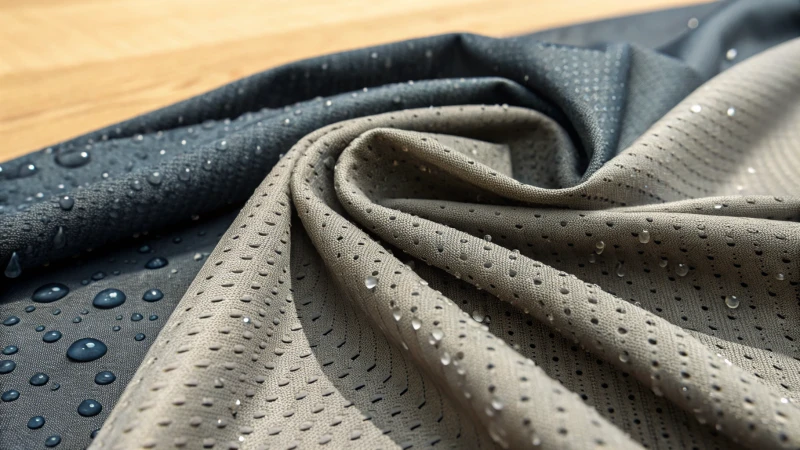
Durability and Longevity
I remember the first time I realized the importance of durable clothing. After my favorite cotton tee wore out too soon, I switched to polyester. What a difference! Polyester and nylon3 are incredibly robust; they resist wear and tear much better than natural fibers. This makes them perfect for activewear that faces frequent use. Now, my gym clothes last a lot longer.
Lightweight Characteristics
Have you ever felt weighed down by heavy fabrics? I certainly have. That’s where the lightweight nature of synthetic blends comes in. Wearing polyester or nylon is like having a second skin—comfortable and flexible, which is a dream come true during a run or yoga session. It's like they were made for movement!
| Feature | Polyester | Nylon |
|---|---|---|
| Durability | High | High |
| Moisture-Wick | Excellent | Good |
| Elasticity | Good | High |
Moisture-Wicking Abilities
I used to avoid workouts because of the discomfort of sticky, sweaty clothes. But then I discovered the moisture-wicking magic4 of synthetic blends. Polyester and nylon pull moisture away from the skin, keeping me dry even during the sweatiest workouts. It's a game-changer.
Versatility in Use
These fabrics aren’t just for sports gear. From casual outings to formal events, synthetic blends fit right in. I’ve worn them hiking, at the office, and even at weddings! Their adaptability is one reason they’re a staple in my wardrobe.
Comparing With Natural Fibers
While I love my cotton shirts for lounging at home, they don’t hold up like synthetics in the gym. Polyester and nylon5 offer resistance to pilling and shrinkage, which are common issues with natural fibers. It's these practical advantages that make them ideal for so many uses.
Explore these characteristics further to understand why synthetic blends have become a staple in modern textile manufacturing and design.
Polyester is more elastic than nylon.False
Nylon has higher elasticity compared to polyester.
Synthetic blends resist pilling better than cotton.True
Synthetic blends like polyester and nylon are less prone to pilling.
Why is Bamboo Considered a Superior Fabric for Odor Control?
Ever wondered why bamboo fabric seems to be the talk of the town, especially when it comes to keeping odors at bay? Let me share why it's become my personal favorite.
Bamboo fabric is a top choice for odor control because of its natural antibacterial properties that prevent odor-causing bacteria from thriving. Its ability to wick moisture and allow breathability also helps in keeping you dry and odor-free.
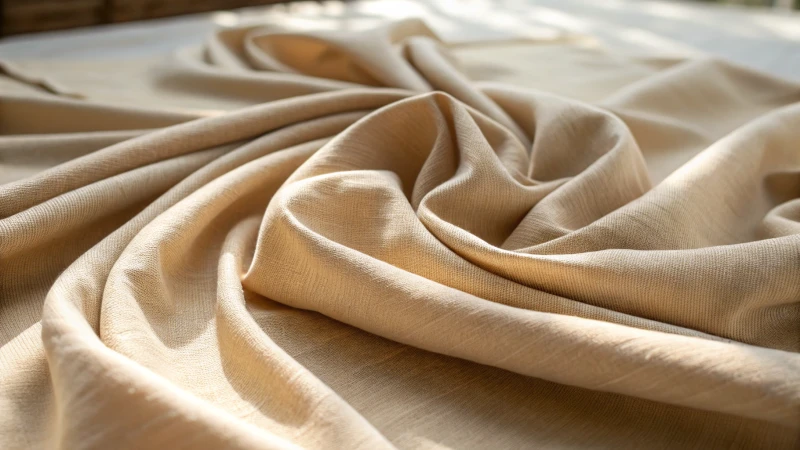
The Science Behind Bamboo's Antibacterial Properties
I remember the first time I tried on a bamboo shirt; I was amazed at how fresh it felt even after a long, active day. That's all thanks to bamboo's secret weapon: an antimicrobial agent known as bamboo kun. This natural defender keeps bacteria and fungi at bay, unlike other fabrics like cotton or polyester, which might need chemical help. This natural property sets bamboo apart6 from other fabrics.
Breathability and Moisture-Wicking Ability
What really won me over was bamboo's breathability. Imagine going for a jog and not feeling like you're wrapped in plastic. Bamboo fibers breathe like a dream and wick moisture away faster than you'd believe. They allow air to circulate and moisture to escape7, ensuring that sweat does not accumulate on the skin. This means no sweaty patches sticking around to ruin your day—it's like having an invisible air conditioner that keeps you cool and fresh.
| Fabric | Breathability | Moisture-Wicking | Antibacterial |
|---|---|---|---|
| Bamboo | High | Excellent | Natural |
| Cotton | Moderate | Moderate | None |
| Polyester | Low | Excellent | Chemical |
Comparisons with Other Fabrics
In my quest for the perfect fabric, I learned that bamboo isn't just about performance; it's about doing good by Mother Earth too. When comparing bamboo with traditional materials, it's important to consider both environmental impact8 and performance. Unlike cotton, which guzzles water and loves pesticides, bamboo grows faster than a rumor with minimal fuss. Sure, polyester wicks well but struggles with breathability and often needs chemical treatments for odor control.
- Cotton: Feels like a sponge sometimes, trapping moisture and odors.
- Polyester: Tough as nails but needs chemical help to stay fresh.
- Bamboo: Naturally fights odors and is as green as they come.
Choosing bamboo feels like a win-win: it's kind to my skin and kind to the planet. So next time you're on the hunt for odor-fighting fabrics, give bamboo a try—your nose (and conscience) will thank you.
Bamboo fabric contains a natural antibacterial agent.True
Bamboo kun is an inherent antimicrobial agent in bamboo fibers.
Polyester fabric naturally resists odors without treatment.False
Polyester requires chemical treatments to resist odors effectively.
What Are the Key Factors in Choosing Underwear for Sweating?
Ever found yourself drenched in sweat and feeling less than fresh after a workout or a warm day? Choosing the right underwear can make all the difference.
When choosing underwear for sweating, focus on moisture-wicking fabrics such as merino wool, synthetic blends, or bamboo. These materials keep you dry, reduce odor, and enhance comfort during physical activities.
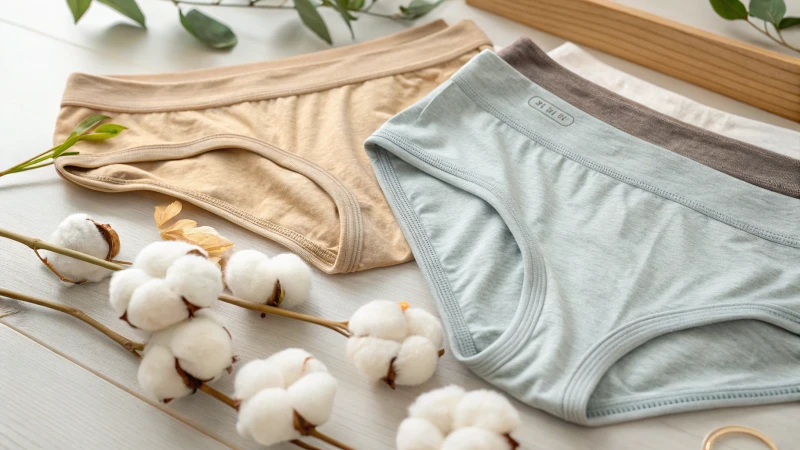
Understanding Fabric Options
I remember the first time I tried to jog in my old cotton boxers. Big mistake! They felt like a soggy towel after just a few minutes. That's when I discovered the magic of moisture-wicking fabrics.
| Fabric | Benefits |
|---|---|
| Merino Wool9 | Naturally breathable, temperature regulating |
| Polyester & Nylon | Durable, lightweight, excellent moisture management |
| Bamboo | Antibacterial properties, reduces odor |
These materials are designed to pull moisture away from your skin, helping you stay dry and comfortable.
The Role of Fit and Design
If you've ever dealt with chafing, you know how crucial fit is. I once wore a pair of ill-fitting underwear on a hike—let's just say it wasn't my finest moment. Now, I always go for a snug fit that moves with me, avoiding any friction disasters. Seamless designs or flatlock seams are a godsend for preventing irritation during physical activities10. Whether it's briefs, boxers, or boxer briefs, finding your style is key to comfort.
Importance of Breathability
Breathability can be the difference between a comfortable day and an unbearable one. Imagine being able to feel airflow without compromising on moisture-wicking efficiency—bliss! That's what you get when you choose breathable materials that prevent heat buildup. It's like having your own personal air conditioning system that keeps you cool during exercise or on those sweltering summer days.
Additional Features to Consider
I've also learned to appreciate the little things—like anti-odor technology woven into fabrics that keep you smelling fresh even after a grueling workout. Stretchy materials offer more freedom, allowing me to move without feeling constrained. Some innovative designs11 even come with mesh panels that enhance airflow, making a world of difference in comfort.
Merino wool underwear is naturally breathable.True
Merino wool is known for its natural breathability and temperature regulation.
Bamboo fabric does not reduce odor in underwear.False
Bamboo fabric has antibacterial properties that help reduce odor.
Conclusion
Moisture-wicking underwear made from merino wool, polyester, nylon, and bamboo effectively keeps you dry and comfortable by pulling sweat away from the skin, enhancing overall comfort during physical activities.
Discover more about how Merino wool enhances your outdoor experience with its versatile properties. ↩
Learn why bamboo's antibacterial features make it a popular choice alongside Merino wool. ↩
Learn how the molecular structure of synthetic fibers enhances their durability. ↩
Understand the science behind moisture-wicking properties of these materials. ↩
Compare the pros and cons of synthetic versus natural fabrics. ↩
Learn more about bamboo kun's natural antibacterial properties and how it contributes to odor resistance. ↩
Discover how bamboo's moisture-wicking abilities help keep your skin dry and odor-free. ↩
Explore the environmental advantages of choosing bamboo fabric over other materials. ↩
Discover why merino wool is favored for its breathability and temperature regulation. ↩
Find out which underwear designs work best for comfort during activities. ↩
Explore how innovative designs improve airflow and comfort. ↩

